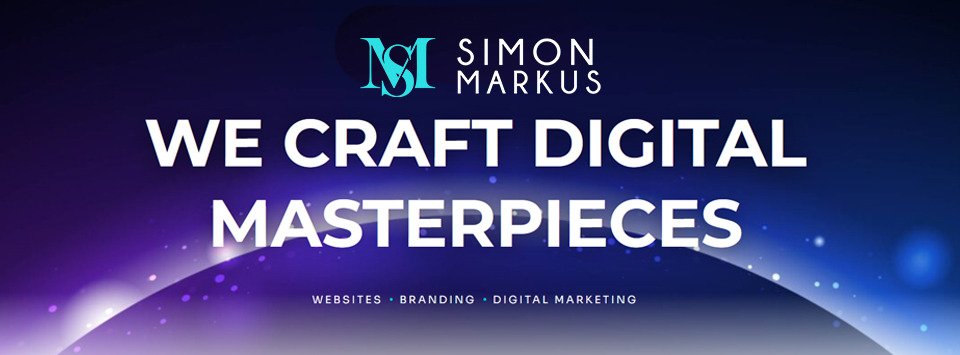What readers will learn from this article:
- The definition and importance of content writing.
- How to understand and tailor content to the target audience.
- Techniques for brainstorming content ideas.
- The importance of outlining and incorporating keywords.
- Tips for crafting engaging introductions and compelling body content.
- Best practices for incorporating SEO into content writing.
- The importance of proofreading, editing, formatting, and presentation.
- How to create effective call-to-action statements.
- The benefits of revisiting and updating content.
- The significance of high-quality content and actionable tips for success.
In today’s digital age, content writing has become an essential tool for businesses to establish their online presence and engage with their target audience. But what exactly is content writing and why is it so important?
Definition and Importance of Content Writing
Content writing refers to the creation and publication of written material on various digital platforms such as websites, blogs, social media, and online publications. It involves crafting compelling and valuable content that captures the attention of the readers and drives them to take desired actions.
The importance of content writing cannot be overstated. Well-written and relevant content not only helps businesses attract and retain their target audience but also plays a crucial role in improving search engine rankings. When done right, content writing can significantly impact a business’s success by increasing brand visibility, generating leads, and driving conversions.
Differences between Content Writing and Other Forms of Writing
While content writing shares similarities with other forms of writing, such as journalism or creative writing, it also has its distinct characteristics.
One key difference is that content writing is often created with a specific purpose in mind, whether it’s to inform, educate, entertain, or persuade the audience. It focuses on addressing the needs and interests of the target audience and providing them with valuable information or solutions to their problems.
Another difference lies in the medium through which content is delivered. Unlike traditional forms of writing, content writing is primarily designed for online consumption. This means that content writers must be proficient in writing for the web, taking into account factors such as search engine optimization (SEO), user experience, and readability.
How Content Writing Impacts Business Success
Effective content writing can have a significant impact on a business’s success. Here are some ways in which it can benefit your business:
- Improved Search Engine Rankings: High-quality and optimized content helps search engines understand the relevance and value of your website. By incorporating relevant keywords and following SEO best practices, you can increase your website’s visibility in search engine results pages (SERPs), driving more organic traffic to your site.
- Increased Website Traffic: Compelling and engaging content attracts visitors to your website, keeping them engaged and encouraging them to explore further. This increased traffic can result in more leads and potential customers for your business.
- Enhanced Brand Awareness: Consistently creating valuable content establishes your brand as a trusted source of information in your industry. By consistently delivering valuable content, you can build brand awareness, credibility, and authority, which can lead to increased customer loyalty and trust.
- Improved Conversion Rates: Well-crafted content that addresses the needs and pain points of your target audience can significantly influence their purchasing decisions. By providing valuable information and solutions through your content, you can increase the likelihood of converting visitors into paying customers.
Now that we understand the importance of content writing and how it impacts business success, let’s delve into the strategies and techniques that can help you create compelling and effective content.

Understanding the Target Audience
Before you can start creating content, it’s crucial to have a deep understanding of your target audience. By knowing who your audience is, what they are interested in, and what challenges they face, you can tailor your content to meet their expectations and provide the most relevant information.
Conducting Audience Research
To gain insights into your target audience, it’s essential to conduct thorough audience research. Some effective research methods include:
- Surveys and Questionnaires: Create surveys or questionnaires to collect information directly from your target audience. Ask questions about their demographics, interests, preferences, and pain points.
- Social Media Listening: Monitor conversations and discussions on social media platforms related to your industry or niche. Pay attention to the questions, comments, and concerns raised by your target audience.
- Competitor Analysis: Study your competitors’ content and their engagement with their audience. Identify what resonates with their audience and use that information to inform your content strategy.
Identifying Demographics, Interests, and Needs
Once you have gathered the necessary data, analyze it to identify key demographics, interests, and needs of your target audience. Consider factors such as age, gender, location, education level, and job title.
Understanding your audience’s interests and needs will help you create content that provides value and resonates with them. For example, if your target audience consists of small business owners, they may be interested in content related to business growth strategies, marketing tips, or technology solutions.
Tailoring Content to Meet Audience Expectations
Armed with a deep understanding of your target audience, you can now tailor your content to meet their expectations. Consider the following tips:
- Use a tone and language that resonates with your audience. If your target audience consists of professionals, maintain a professional and knowledgeable tone.
- Address the pain points and challenges faced by your audience. Provide practical solutions and actionable advice through your content.
- Incorporate relevant examples, case studies, and success stories to make your content relatable and credible.
By understanding your target audience and their expectations, you can create content that captures their attention, engages them, and drives them to take desired actions.

Brainstorming Content Ideas
Once you have a clear understanding of your target audience, it’s time to brainstorm content ideas that will resonate with them. Here are some effective techniques for generating content ideas:
Mind Mapping Techniques
Mind mapping is a powerful technique for generating ideas and organizing your thoughts. Start by writing down a central topic or theme in the center of a blank page or digital tool. Then, branch out with related subtopics and ideas. This visual representation can help you see connections and identify potential content ideas.
Conducting Keyword Research
Keyword research is essential for identifying the topics and keywords that your target audience is actively searching for. Use keyword research tools like Google Keyword Planner, SEMrush, or Moz to discover relevant keywords with high search volume and low competition. These keywords can serve as inspiration for your content ideas.
Analyzing Industry Trends
Staying up-to-date with the latest industry trends is crucial for creating timely and relevant content. Monitor industry news, follow influential blogs, and engage in discussions on social media platforms to identify emerging trends and topics that are garnering attention.
Addressing Popular Content Topics and Formats
Pay attention to the content topics and formats that are currently popular among your target audience. Look for content that has gained a significant amount of engagement and shares. By addressing these popular topics and using similar content formats, you can increase the chances of your content resonating with your audience.
By utilizing these brainstorming techniques and staying in tune with industry trends, you can generate a wide range of content ideas that will captivate your audience and provide them with valuable information.
Creating an Outline
Once you have a solid list of content ideas, the next step is to create an outline for your content. An outline serves as a roadmap for your writing process, helping you organize your thoughts and present information in a logical and structured manner.
Importance of Outlining
Creating an outline before writing the actual content can save you valuable time and ensure that your content is well-structured. An outline provides a clear overview of the main points you want to cover and helps you maintain a logical flow throughout your piece.
Structuring Content with Main Points and Subheadings
When creating your outline, start with the main points that you want to address in your content. These main points will serve as the backbone of your article. Under each main point, include subheadings that break down the topic further and provide a clear structure for your content.
Incorporating Keywords and User Intent into the Outline
As you create your outline, keep in mind the keywords that you want to target and the user intent behind those keywords. Incorporate the keywords naturally into your main points and subheadings, ensuring that they align with the overall purpose of your content. This will help search engines understand the relevance of your content and improve your chances of ranking higher in search results.
By creating a well-structured outline, you can ensure that your content flows smoothly and covers all the key points you want to convey to your audience.
Crafting Engaging Introductions
The introduction of your content plays a crucial role in capturing the attention of your audience and convincing them to continue reading. Here are some strategies to craft engaging introductions:
Importance of Captivating Introductions
A captivating introduction sets the tone for your content and entices readers to delve further into your piece. It should grab their attention, pique their curiosity, and make them eager to explore what you have to offer.
Using Storytelling Techniques
One effective way to engage your audience from the start is by using storytelling techniques. Tell a relevant and compelling story that relates to the main topic of your content. This can help create an emotional connection with your readers and make your content more relatable.
Posing Thought-Provoking Questions
Engage your audience by posing thought-provoking questions in your introduction. These questions should be directly related to the topic you’re discussing and should make readers reflect on their own experiences or knowledge. This can create a sense of curiosity and encourage readers to continue reading to find the answers.
Sharing Interesting Facts
Start your content with an interesting and relevant fact that captures the reader’s attention. This can be a surprising statistic, a little-known piece of information, or an intriguing insight. By presenting a unique fact, you can hook your readers and make them eager to learn more.
Addressing User Intent in Introductions
When crafting your introduction, keep in mind the user intent behind the keywords you’re targeting. Understand what your audience is looking for and address their needs and expectations right from the start. By aligning your introduction with user intent, you can establish relevance and encourage readers to continue reading.
Crafting a compelling introduction sets the stage for the rest of your content. By using storytelling techniques, posing thought-provoking questions, sharing interesting facts, and addressing user intent, you can captivate your audience and make them eager to explore the rest of your article.
| Crafting Engaging Introductions | Developing Compelling Body Content |
|---|---|
| Use storytelling techniques | Incorporate relevant examples and supporting evidence |
| Pose thought-provoking questions | Incorporate visuals and multimedia elements |
| Share interesting facts | Maintain a logical flow of information |
| Address user intent in introductions | Answer common questions and concerns in the body content |

Developing Compelling Body Content
The body of your content is where you delve deeper into your topic and provide valuable information to your audience. Here are some strategies for developing compelling body content:
Using Relevant Examples and Supporting Evidence
To make your content more engaging and credible, incorporate relevant examples and supporting evidence. This can include real-life case studies, success stories, industry research, or expert quotes. By providing concrete examples and evidence, you can enhance the credibility of your content and make it more relatable to your audience.

Incorporating Visuals and Multimedia Elements
Visuals and multimedia elements can greatly enhance the impact of your content. Incorporate relevant images, infographics, videos, or interactive elements to break up the text and make your content more visually appealing. Visuals can help illustrate complex concepts, increase understanding, and engage your audience on a deeper level.
Maintaining a Logical Flow of Information
Ensure that your content maintains a logical flow of information from one point to another. Each paragraph should smoothly transition into the next, and the overall structure should make sense to the reader. Use transition words and phrases to guide your audience through your content and help them follow the flow of your thoughts.
Answering Common Questions and Concerns in the Body Content
Anticipate the questions and concerns your audience may have and address them in the body of your content. By proactively answering these questions, you demonstrate your expertise and provide additional value to your readers. This can help establish trust and credibility, making your audience more likely to engage with your content and take the desired actions.
By incorporating relevant examples, visuals, maintaining a logical flow, and addressing common questions and concerns, you can develop compelling body content that holds your audience’s attention and provides them with valuable information.
Incorporating SEO Best Practices
Incorporating SEO best practices into your content is essential for improving its visibility in search engine results and reaching a wider audience. Here are some key SEO practices to consider:
Importance of Search Engine Optimization
Search engine optimization (SEO) involves optimizing your content to improve its visibility in search engine results. By implementing SEO best practices, you can increase organic traffic to your website and improve your chances of ranking higher in search results.
Using Relevant Keywords
Identify relevant keywords that are highly searched by your target audience and incorporate them naturally into your content. This helps search engines understand the context and relevance of your content. However, avoid keyword stuffing, as it can negatively impact your rankings and readability.
Writing Meta Descriptions
Meta descriptions provide a summary of your content in search engine results. Craft compelling and concise meta descriptions that accurately summarize the main points of your content and entice readers to click through to your website.
Optimizing Headings
Use headings (h1, h2, h3, etc.) to structure your content and make it more scannable for both readers and search engines. Incorporate relevant keywords naturally into your headings to improve your content’s SEO.
Incorporating Internal and External Links
Internal and external links play a crucial role in SEO. Incorporate relevant internal links that lead readers to related content on your website, enhancing their user experience and improving your website’s overall SEO. Additionally, include authoritative external links to credible sources that support your content and provide additional value to your readers.
Implementing SEO-friendly Formatting and Structure
Optimize your content’s formatting and structure to improve its SEO. Use bullet points, numbered lists, and subheadings to break up your content and make it more scannable. Incorporate bold and italic formatting to highlight important information and keywords. These formatting techniques not only improve readability but also help search engines understand the structure and relevance of your content.
By incorporating SEO best practices into your content, you can increase its visibility, attract more organic traffic, and improve your chances of ranking higher in search engine results.
Case Study: How Compelling Copy Transformed Sarah’s Online Business
Sarah, a small business owner, had been struggling to attract customers to her online store. Despite having quality products and a visually appealing website, her conversion rates were disappointingly low. She knew she needed to make a change, so she started researching ways to improve her online presence.
Through her research, Sarah discovered the power of compelling copy. She learned that effective content writing could not only engage her target audience but also drive them to take action. Excited to implement this strategy, Sarah decided to revamp her website with persuasive and engaging copy.
First, Sarah conducted thorough audience research to understand her target market better. She analyzed their demographics, interests, and needs, enabling her to tailor her content to their expectations. Armed with this knowledge, Sarah brainstormed content ideas that would resonate with her audience.
Sarah then created a detailed outline, ensuring her content flowed logically and addressed her customers’ pain points. She incorporated relevant examples and supporting evidence to make her content more persuasive. By using storytelling techniques in her introductions, Sarah captivated her audience from the start, encouraging them to continue reading.
To optimize her content for search engines, Sarah incorporated SEO best practices. She conducted keyword research, strategically placed relevant keywords throughout her copy, and optimized headings and meta descriptions. By incorporating internal and external links, Sarah enhanced the credibility and visibility of her website.
After thoroughly proofreading and editing her content, Sarah focused on formatting and presentation. She used subheadings, bullet points, and numbered lists to improve readability and user experience. Sarah also incorporated high-quality images and infographics to visually enhance her content.
Finally, Sarah crafted compelling calls to action, encouraging her audience to make a purchase or engage further with her brand. She made sure her CTAs were clear, concise, and aligned with her customers’ needs and desires.
The results were astounding. Sarah’s online business experienced a significant boost in website traffic and conversion rates. Customers were not only staying on her website longer but also making more purchases. Sarah’s investment in compelling copy had paid off, demonstrating the power of effective content writing in driving business success.
Sarah’s case study serves as a testament to the impact of compelling copy on small businesses. By implementing the tips and techniques outlined in this article, entrepreneurs like Sarah can transform their online presence and achieve their business goals.

Measuring Content Success and Tracking Business Impact
Measuring the success of your content writing efforts and tracking their impact on your business goals is crucial for continuous improvement. Here are some key metrics and strategies to consider:
Tracking Website Traffic and Engagement
Monitor your website’s traffic using tools like Google Analytics to understand the performance of your content. Track metrics such as page views, time on page, bounce rate, and click-through rates to gauge the engagement levels of your audience. Analyzing these metrics can help you identify the most popular and effective pieces of content.
Analyzing Conversion Rates
Measure the conversion rates of your content by tracking the number of leads or sales generated through your content. Set up conversion tracking goals in Google Analytics or other analytics platforms to gain insights into the effectiveness of your content in driving desired actions.
Monitoring Social Media Engagement
Track the engagement levels of your content on social media platforms. Monitor metrics such as likes, comments, shares, and click-through rates to gauge the impact of your content on social media. This can help you identify the types of content that resonate most with your audience and refine your content strategy accordingly.
Collecting Feedback and Reviews
Request feedback and reviews from your audience to gain valuable insights into the impact of your content. Conduct surveys, encourage comments and reviews, and actively engage with your audience to understand their perception of your content and identify areas for improvement.
By regularly measuring the success of your content writing efforts and tracking their impact on your business goals, you can make data-driven decisions and refine your content strategy to achieve better results.
In conclusion, content writing is a powerful tool for businesses to establish their online presence, engage with their target audience, and drive business success. By understanding your target audience, brainstorming compelling content ideas, creating well-structured content, and incorporating SEO best practices, you can create content that captivates your audience and delivers value. Remember to measure the success of your content and track its impact on your business goals to continuously improve and refine your content strategy.
Sarah Thompson is a seasoned content writer and digital marketing expert with over 10 years of experience in the industry. She has a deep understanding of the power of compelling copy in boosting businesses and driving success. Throughout her career, Sarah has worked with numerous clients across various industries, helping them create engaging and persuasive content that resonates with their target audience.
Sarah’s expertise lies in conducting extensive audience research to identify demographics, interests, and needs. By understanding the target audience, she is able to tailor content that meets their expectations and addresses their pain points effectively. Sarah also excels in crafting captivating introductions, using storytelling techniques, posing thought-provoking questions, and sharing interesting facts to engage readers from the start.
In addition, Sarah is well-versed in incorporating SEO best practices into her writing. She understands the importance of search engine optimization in driving organic traffic and improving visibility. Sarah skillfully uses relevant keywords, writes compelling meta descriptions, optimizes headings, and incorporates internal and external links to improve the search engine rankings of her clients’ websites.
Sarah’s track record includes numerous success stories, such as Sarah’s online business transformation. Through her compelling copy, Sarah helped Sarah achieve significant growth in website traffic, engagement, and conversion rates. She is a firm believer in measuring content success and tracking business impact through website analytics, conversion rate analysis, and social media engagement monitoring.
With her vast experience and expertise, Sarah is committed to helping businesses unlock their full potential through the power of compelling content.



